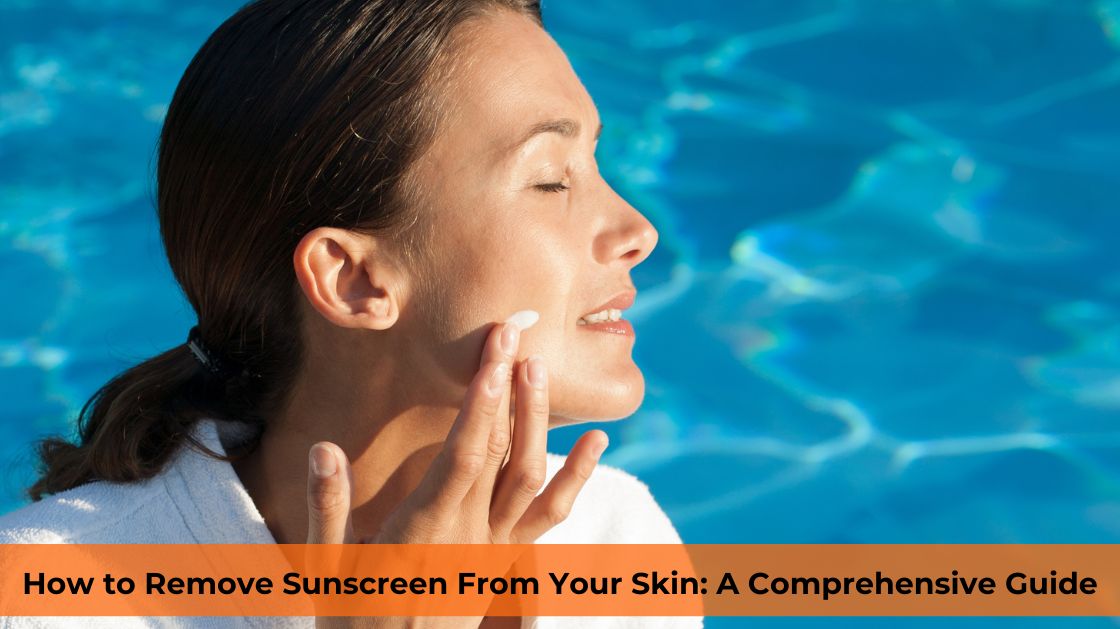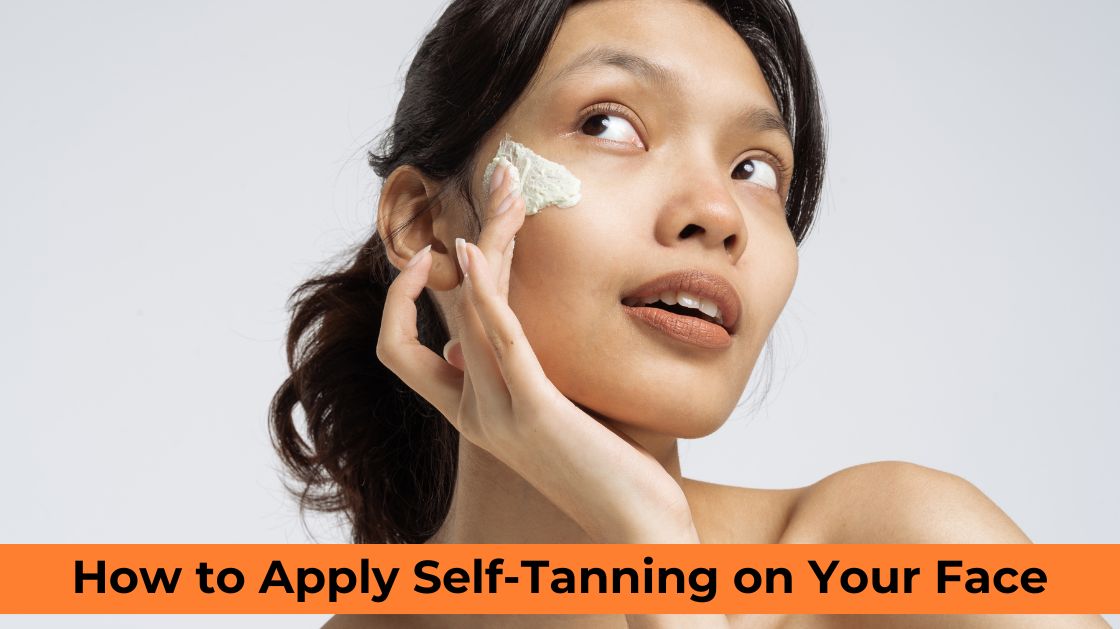Whether you’re returning from a sunny day at the beach or just winding down after a long day outdoors, knowing how to remove sunscreen from your skin is essential for maintaining healthy, happy skin. Sunscreen, while a non-negotiable guardian against harmful UV rays, can be a persistent companion, clinging to your skin longer than you might wish.
Welcome to our comprehensive guide on “How to Remove Sunscreen From Your Skin.” Removing sunscreen effectively can sometimes feel like an art form, with the wrong methods leaving your skin either insufficiently clean or uncomfortably dry.
Many people face the challenge of sunscreen residue that seems to stick to the skin, creating a barrier that’s hard to break down. This can lead to clogged pores, breakouts, and sometimes, a general feeling of discomfort.
Understanding the nature of sunscreen is the first step in tackling its removal. Sunscreens are designed to be water-resistant, ensuring they continue to protect your skin even when you’re swimming or sweating.
This is why simply using water or a regular face wash might not always be effective in removing it thoroughly. Additionally, the type of sunscreen—whether it’s chemical or physical—also plays a crucial role in determining the best removal technique.
Knowing what you’re dealing with is key to choosing the right method to cleanse your skin effectively without causing irritation or dryness.
Effective Ways to Remove Sunscreen Residue From Your Skin
Using Gentle Cleansers and Makeup Removers
Removing sunscreen from your skin not only prevents potential skin issues such as clogged pores, acne, and irritations but also ensures that your skin can breathe and recover, especially after a day under the sun. Effective removal can enhance the efficacy of your nightly skincare routine, allowing other skin-care products to penetrate more deeply and work more effectively.
Steps to Remove Sunscreen From Your Skin
- Start with oil cleansing to dissolve sunscreen.
- Use a water-based cleanser for a thorough cleanse.
- Consider micellar water for sensitive skin.
- Rinse with lukewarm water to avoid skin irritation.
- Pat dry and moisturize for hydrated skin.
By incorporating these steps into your skincare routine, you can ensure that your skin remains clean, healthy, and ready for the next day, free from any lingering sunscreen residues.
Double Cleansing for Complete Removal
Double cleansing, a method from Asian beauty routines, is now globally praised for its effectiveness. It starts with an oil-based cleanser to dissolve oils, sunscreen, and impurities. Then, a water-based cleanser removes any remaining dirt, leaving the skin clean.
Removing sunscreen from the skin goes beyond cleanliness. It’s crucial for skin health, preventing blocked pores, reducing acne risk, and optimizing the skin’s repair processes overnight. This also enhances skincare product absorption, maximizing benefits for radiant, healthy skin.
Steps to Remove Sunscreen From Your Skin
- Apply oil cleanser to dry skin, and massage it to break down sunscreen, makeup, and sebum effectively.
- Use warm water to emulsify and rinse off the oil cleanser.
- Follow with a gentle, water-based cleanser to remove any remaining impurities. Apply in a circular motion, and rinse with lukewarm water.
- Gently pat skin dry, avoid rubbing to prevent irritation. Apply moisturizer for hydrated, protected skin.
Incorporating this method into your skincare routine ensures your skin is thoroughly cleansed, helping to remove sunscreen residue effectively while keeping your skin healthy and preventing potential skincare problems.

The Importance of Proper Cleansing for Different Skin Types
Choosing the right cleansing methods is crucial, particularly when considering the diversity of skin types. Individuals with sensitive skin might require gentler techniques, while those with oily skin may benefit from methods that provide a deeper cleanse. Understanding your skin type can significantly influence the effectiveness of sunscreen removal and overall skin health.
- For Oily Skin: Utilize lightweight, oil-free cleansers to prevent excess oil production without stripping the skin of its natural moisture.
- For Dry Skin: Choose hydrating cleansers with moisturizing ingredients to nourish and prevent skin dryness.
- For Sensitive Skin: Opt for fragrance-free, gentle cleansers that minimize the risk of irritation or allergic reactions.
- For Combination Skin: Seek out balanced cleansers capable of effectively cleansing oilier areas without over-drying the drier patches.
- For Acne-Prone Skin: Incorporate medicated or salicylic acid-based cleansers to help unclog pores and reduce breakouts.
Special Considerations for Water-Resistant and Mineral Sunscreens
- Water-Resistant Sunscreens: Require an initial step of an oil-based cleanser to effectively break down the resistant formula.
- Mineral Sunscreens: Benefit from double cleansing, utilizing a mild, oil-based cleanser to dissolve zinc oxide or titanium dioxide particles.
- Post-Cleansing Care: After removing either type of sunscreen, ensure to hydrate and soothe the skin with a moisturizer suited to your skin type.
Addressing Sunscreen Stains on Clothes and Furniture
Sunscreen stains on clothes and furniture can be a challenging aftermath of adequate sun protection. These stubborn marks, primarily from mineral sunscreens, require specific techniques for removal that safeguard the fabric’s integrity while effectively eradicating the stain. This section offers practical advice on identifying types of sunscreen stains and employing the right cleaning solutions to restore your items without damage.
Consequences of Inadequate Sunscreen Removal
Inadequate removal of sunscreen can lead to various skin issues such as clogged pores, breakouts, and increased sensitivity. Residues that remain on the skin can obstruct the skin’s ability to breathe and regenerate, resulting in a dull complexion and potential skin irritation.
Furthermore, failure to completely remove sunscreen can interfere with the effectiveness of your skincare routine, hindering the absorption of beneficial skin treatments. This can diminish the overall health and appearance of your skin, underscoring the importance of thorough sunscreen removal.
Conclusion
In conclusion, mastering “How to Remove Sunscreen From Your Skin” is crucial for skin health and skincare effectiveness. Choosing the right products and methods for different skin types is vital, from oil-based and water-based cleansers to special treatments for water-resistant and mineral sunscreens.
Addressing stains on clothes and furniture shows sunscreen’s impact beyond skin care. Effective removal methods like oil cleansing and selecting cleansers based on skin type prevent issues and boost skincare product efficacy.
Integrate these practices into your routine to protect skin health and maintain its cleanliness, health, and radiance.













